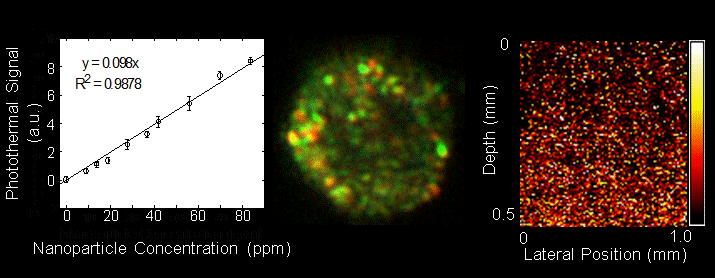Photothermal Microscopy

Photothermal Microscopy exploits optical changes induced by heat to pinpoint the location of molecular targets in biological samples. Temperature changes in a sample result in a small shift in the index of refraction, which can be detected interferometrically. Gold nanoparticles are excellent thermal conductors, and can be used to bind to specific molecular targets (such as cell receptors) to provide localized heat sources. The spatial distribution of these functionalized nanoparticles is detected with photothermal interferometry (or photothermal OCT), and thus the molecule of interest is mapped. Lock-in detection results in excellent sensitivity for photothermal OCT, and therefore photothermal OCT provides three-dimensional molecular images of optically thick biological samples with relatively high spatial resolution and target sensitivity. The added benefits of coherent detection allow for high resolution molecular images to be collected at deeper depths than traditional microscopy techniques. The use of gold nanoparticles instead of organic dyes also prevents sample photobleaching and cytotoxicity.
References
MC Skala, MJ Crow, A Wax, and JA Izatt, Photothermal Optical Coherence Tomography of Epidermal Growth Factor Receptor in Live Cells Using Immunotargeted Gold Nanospheres. Nano Letters 8, 3461-3467 (2008).
